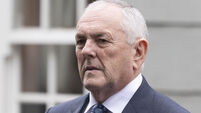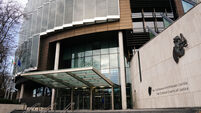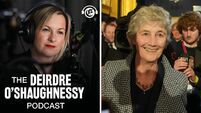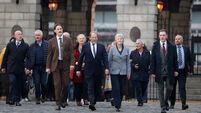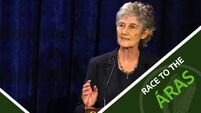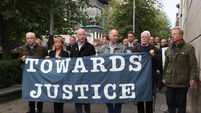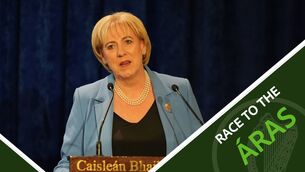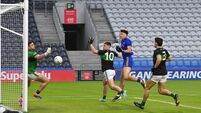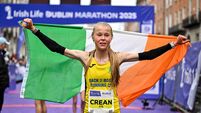Catherine Connolly's was a landslide built on months of hard work
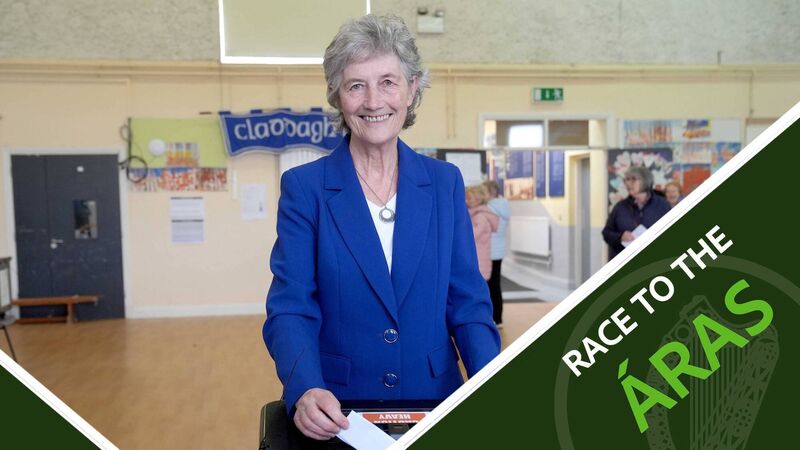
Catherine Connolly casts her vote in the election on Friday.
Catherine Connolly says that her decision to run for president was "torturous".
In her third term as an independent TD for Galway West, Ms Connolly had just finished a four-year stint as the first-ever female Leas Ceann Comhairle and had been appointed chair of the Oireachtas committee on the Irish language, a subject she is passionate about.
Whether she wanted to put herself — and her extremely private family — through a punishing national campaign was a big question.
Ms Connolly's name had been raised as a potential successor to her former party and constituency-mate turned rival Michael D Higgins as far back as 2020. She had received correspondence imploring her to run in 2021 and 2022, but it was not until the beginning of this year that the mechanics began to crystallise.
What emerged was a movement that united the left, brought in 15,000 volunteers and saw over 914,000 people make Ms Connolly the most popular Irish politician of all time. Caveats on turnout and spoiled votes aside, Ms Connolly's victory should be taken for what it was — a landslide built on months of hard work.

At a rally in Monaghan town in the closing days of the campaign, the area's campaign coordinator, Rossa Gilsenan, spoke of how she had written to Ms Connolly in March of this year, asking that she run for president.
By that stage, Labour leader Ivana Bacik had written to Cian O'Callaghan, leading the Social Democrats while Holly Cairns was on maternity leave, and Green Party leader Roderic O'Gorman, suggesting the triumvirate discuss fielding a joint candidate. A second meeting saw Mr O'Callaghan invite People Before Profit's Paul Murphy and Sinn Féin's Mary Lou McDonald.
At that meeting, sources said, names were "thrown out without any real conviction one way or the other".
Read More
Joe Duffy was suggested, Sinn Féin wanted to tap GAA President Jarlath Burns, but two names kept coming back up: Ms Connolly and Frances Black.
Ms Black told Patrick Kielty on in March she would be up for a run, but by May was cooling on the idea. One person close to the campaign said that while Ms Black was "hugely respected", there were questions about how she would handle a campaign.
Besides, the Social Democrats and People Before Profit had met Ms Connolly and were clear that she was up for a run. At this point, "things moved quickly" and Ms Connolly finally ended speculation in mid-July by confirming she was running with the backing of those parties and a handful of independents.
This, Labour sources admit, boxed them in. A combined left candidate without them would leave them on the sidelines, unable to muster the 20 Oireachtas members necessary to run its own candidate, but Ms Connolly had left the party in 2007 and had been deeply critical of its 2011-2016 place in government.
An internal consultation showed that a majority — 58% — of members wanted to back Ms Connolly, but high-profile members like Alan Kelly and Fergus Finlay questioned the wisdom of the move. In the background, while Ms Connolly attended a few events, a core of a team was being put in place, led by longtime assistant Béibhinn O'Connor and barrister Céile Varley.
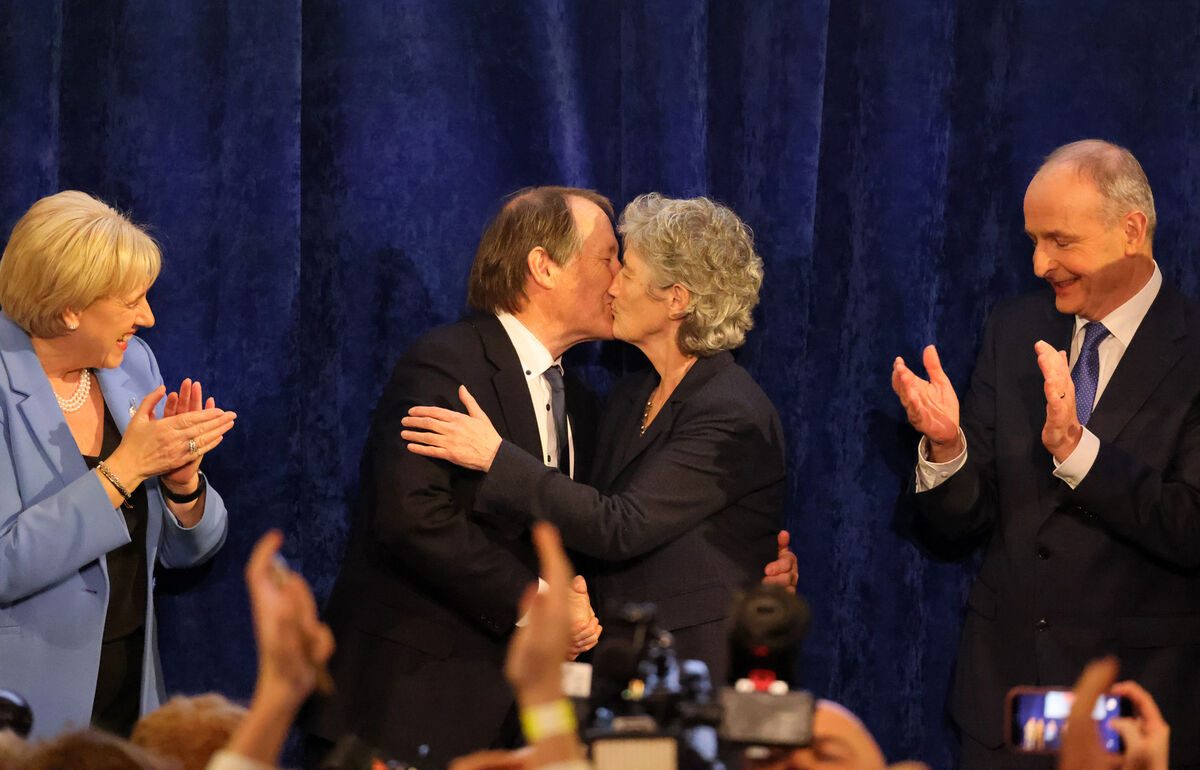
The campaign's branding was solidified in early August from graphic designer Anna Cassidy, social media was led by Claire McGowan and a team of volunteers, while former political correspondent Aoife Moore came on board to help shape media strategy.
Part of this was putting Ms Connolly on podcasts — Blindboy, , , — here the candidate could have conversations rather than speak to the people while avoiding the more adversarial setting of doorsteps with the political media.
Ms Connolly's team was wary after her opening press conference on a loud and busy Kildare Street while pro-Palestinian protesters chanted nearby, became particularly tough. Ms Connolly would mention a number of times on the trail that an early question to her on that sweltering day was about "her friends in Buswells", an implication that Claire Daly and Mick Wallace were somehow pulling the strings of a campaign they would be seen nowhere near.
This would manifest itself in often limited or shortened doorsteps and, while Ms Connolly did plenty of broadcast media, some journalists would find themselves unable to get answers from the candidate herself or the campaign team.
The made its rebuffed questioning of Ms Connolly a recurring theme of its coverage in the days before the election and reported it had had an interview with Ms Connolly cancelled and not rescheduled.
As parties came on board, the campaign gained experience and resources. Labour's Ciaran Ahern and the Social Democrats' Gary Gannon were praised across the board for their efforts and while Labour's internal politics meant that the party was not permitted by its membership to give party funds, it held internal fundraising. TDs donated and donated corriboard which it had in storage from last year's general election. The board, which would otherwise have been damaged, secured 5,000 Connolly posters. Labour's general secretary Billie Sparks is another who many praise for these kinds of pragmatic organising moves.
"The campaign was doing well, but was loose by the time we came on board," says a Labour source. "We gave it a bit of help because we have people who've been involved in big national campaigns."
But if Labour's assistance was structural, it was Sinn Féin which "turbocharged" the Connolly campaign. Leader Mary Lou McDonald had, in the eyes of many on the left, been stalling for time. Her party had barrelled into the 2018 election for no real reason, had come fourth and annoyed its membership. Ms McDonald wanted whatever conclusion her party arrived at to come late, advocating for a shorter time period for a candidate to trip up.
So when, in July, she ruled herself back into contention, she led the media on something of a merry dance.
"I don't think Mary Lou ever really wanted it," says a Sinn Féin source, "but she could have won it."
The knowledge that Sinn Féin could jump into the race was something the Connolly camp was aware of, but insists it wasn't fearful of. Ms Connolly visited Belfast in August and played up her Irish unity credentials, but campaigners insist this was always part of her belief system and not a sop to Sinn Féin.
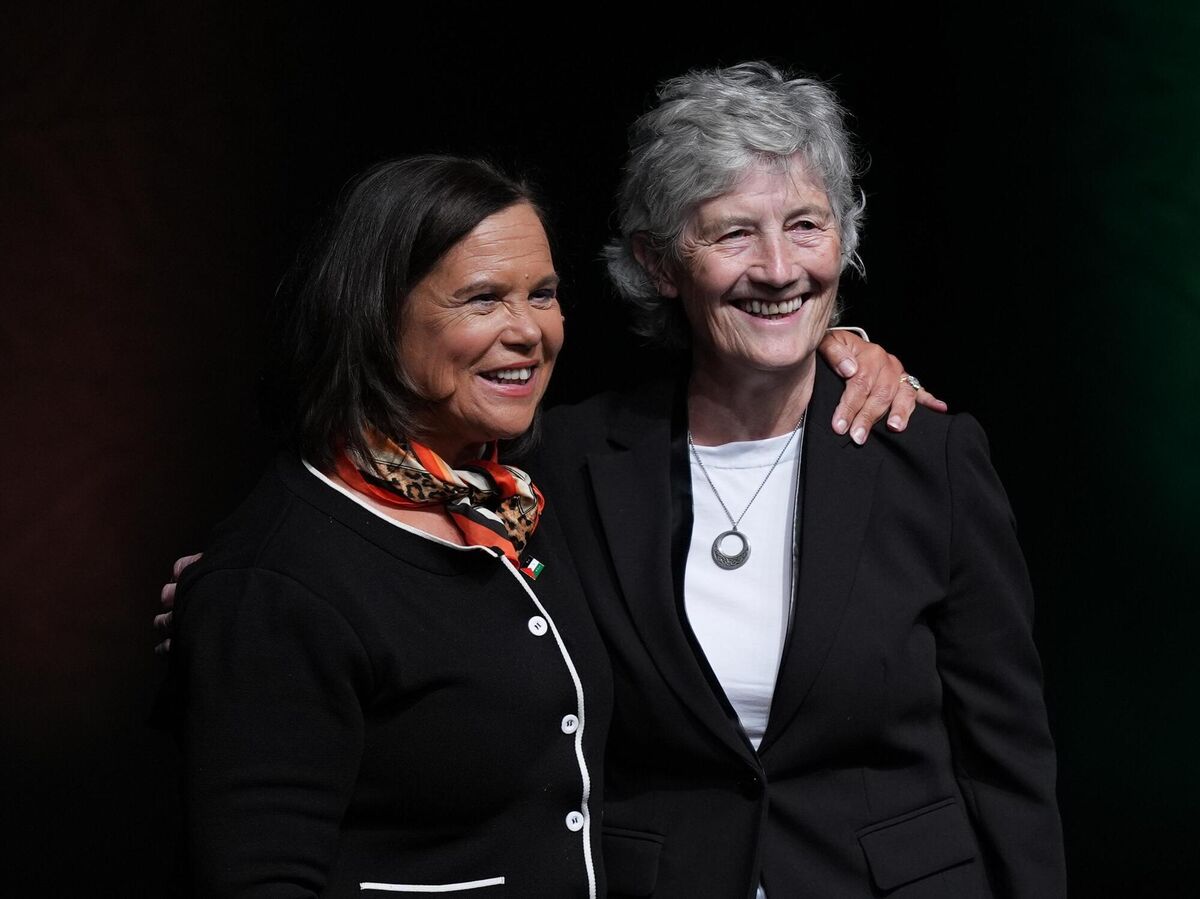
When Ms McDonald told the media at the National Ploughing Championships that her party's entry to the race would be "a game-changer", some in government feared First Minister Michelle O'Neill could run.
When Sinn Féin announced it would support Ms Connolly, the Galway woman was on the road and took a phone call from RTÉ. The fact that the announcement had not been coordinated led to some mirth in government circles and one newspaper article quoted ministers as being "relieved".
On Saturday as the scale of the victory became apparent, a mischievous senior Sinn Féin staffer posted the article on social media.
Sinn Féin's expertise in areas of the country which the Connolly campaign had both reached and not reached became apparent. It had volunteers and party activists actively enthused by supporting Ms Connolly and its digital team delivered gold on a visit to North Inner City Dublin. Cathyann O'Boyle, the Sinn Féin staffer, caught Ms Connolly on video doing solos with a football and playing basketball in the courtyard of a flat complex and the video took on a life of its own.
"It's the moment that won the election," one Fine Gael TD said on Saturday, while the Connolly camp had the framing of its candidate it had sought.
"Loads of people knew Catherine's name, but didn't know who she was. That video was such a good way of showing that," says a campaign source.
In the days after the video was posted, one Fine Gael TD said it had been in sports WhatsApp groups they were in and fretted, "we could be fucked here".
The Connolly campaign felt the momentum, but stories about Ms Connolly's hiring of a convicted woman to work in Leinster House and her work for banks in repossession cases were stubborn obstacles, though many said those issues hardened their belief in the candidate.
"The Claire Byrne interview (the day after the hiring of Ursula Shannon had broken) was the point I decided I'd walk on hot coals for her," says one TD.
"She could have thrown that woman under the bus, given a political answer and tried to draw a line under it. But she walked the walk."
That refusal to give an inch impressed supporters, confounded journalists and commentators, and enraged opponents, who complained that "nothing is sticking" to the Galway woman as various questions and controversies bounced off in the face of her complete refusal to moderate or tailor answers to the media.
"There'd be times you'd be thinking 'answer this in a political way' and Catherine just wouldn't. And you'd think 'that could be a mistake', but the answers she gave were accepted on the doors and the issues like Syria never came up, really," says a TD.
As the campaign caught the crest of a wave, the "vibes" grew. Campaign merchandise was selling, crowds were getting bigger, it was harder to walk around towns, such was the demand for selfies. A gig in Vicar Street, headlined by Christy Moore, sold out. And, all along, WhatsApp groups were buzzing. The messaging app was used to organise and mobilise and, as one volunteer put it, "were always going".
A Fine Gael strategy to bring Paul Murphy's involvement in the campaign into a debate led to a bizarre moment in which Heather Humphreys called him Ms Connolly's campaign manager and sparked backlash from the Connolly team in protection not of the TD, but of Ms O'Connor.
"Béibhinn had done such an incredible job, to see her written out of it for an attack line was infuriating," says one Connolly supporter.
By the time two late polls put Ms Connolly's lead as unassailable, those vibes only grew and a rally in Galway on Thursday evening, tagged as a get out the vote event became a de-facto victory rally.
By Saturday, that rally had moved to O'Donoghues in Dublin's city centre as Team Connolly toasted the newly-elected President.




